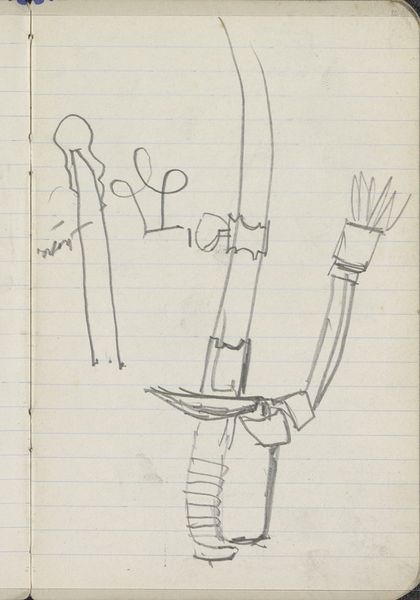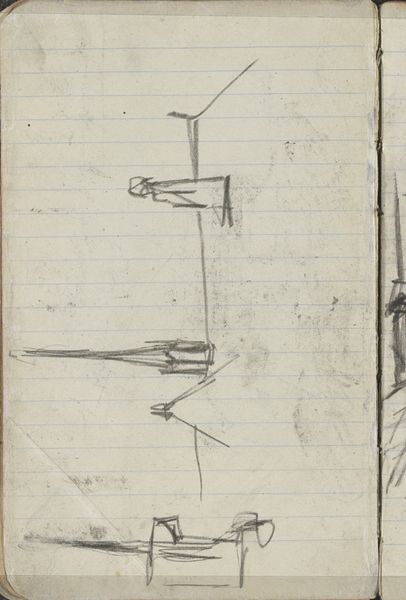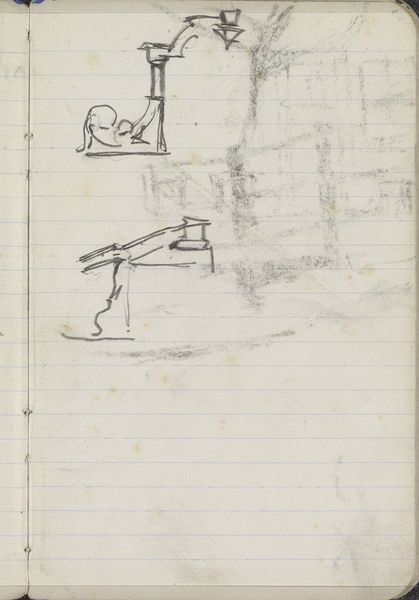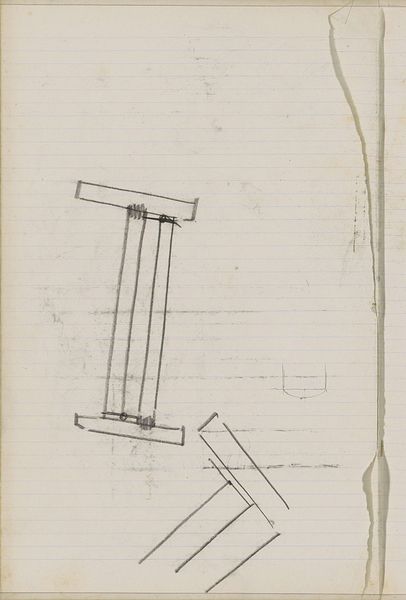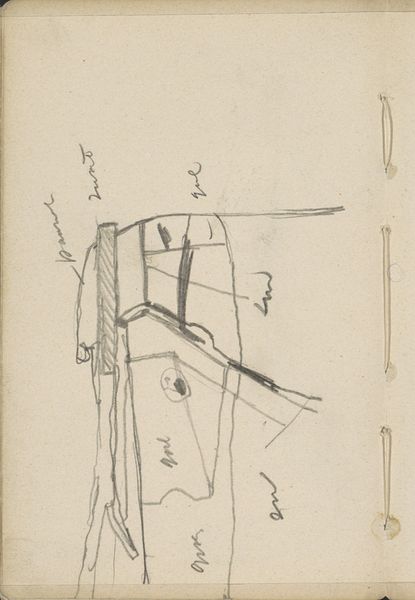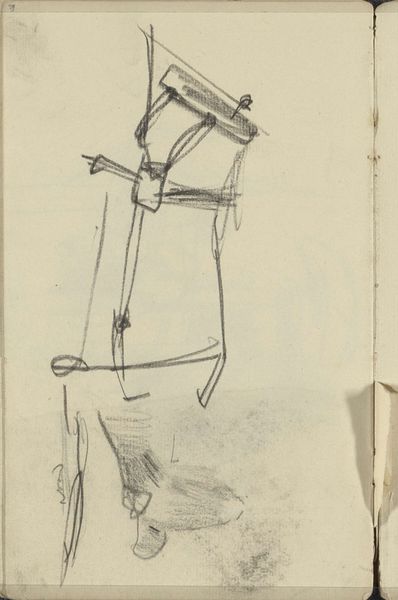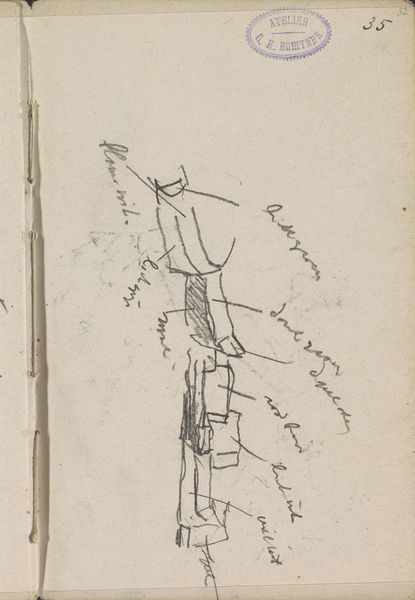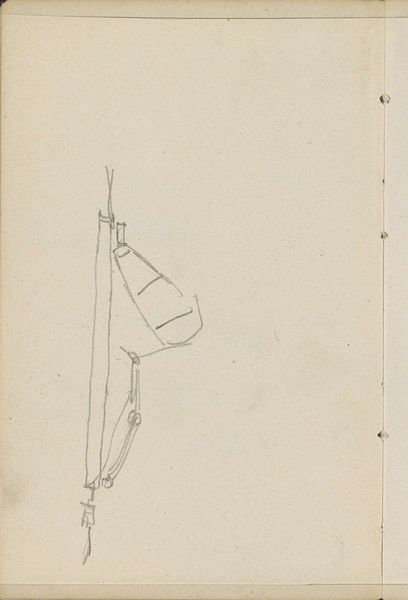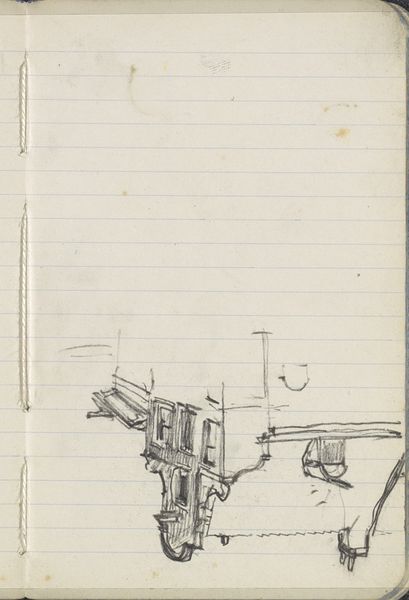
drawing, paper, pencil
#
drawing
#
paper
#
geometric
#
pencil
Copyright: Rijks Museum: Open Domain
Curator: Looking at these sketches titled "Studies", created by George Hendrik Breitner between 1898 and 1902, one immediately gets the feeling of something being quickly captured. The drawing material used is pencil on paper. Editor: Yes, it feels immediate, almost ephemeral. There's a fragility to the lines and the lightness of the medium. You sense the artist trying to grab something before it vanishes. Is it of something functional, technical, or merely representational of status? Curator: Considering Breitner’s focus during that time on capturing the everyday life of Amsterdam, especially working-class women and urban scenes, this kind of study could serve as groundwork. I’d argue the material acts as a blank slate for a conversation of inequality of production, or just an aesthetic study? Editor: Possibly, the artist has done something to produce this effect, this moment of inequality as you describe it. The geometric shapes feel both planned and improvised, right? This balance intrigues me; you’ve got these rather angular lines juxtaposed with the rounded bowl shape above it all. Do we think this serves function? What does the line weight tell us about that function and its impact on status in production? Curator: Absolutely. And within the context of art history, this pencil on paper suggests the immediate socio-economic divide through a deliberate art act and creation medium in production of work. But look closer. This also mirrors how marginalized voices may feel in similar situations today. It serves the argument about the socio-economic background within its representation in fine arts practices. It gives agency to the people affected and represented in Breitner's broader body of work, the function as production on identity and voice. Editor: I hadn't thought of it that way. So, by emphasizing this intersection between representation and functionality within this study, Breitner provides not just aesthetic practice but a social reflection through making? Curator: Precisely. He turns a sketch, which often implies hierarchy of voice, or simply status of materials on labor in the means of creation. I wonder about all the ways that still resonates today with modern inequality structures. Editor: The social impact of what these representations generate from a sketch and pencil? Food for thought.
Comments
No comments
Be the first to comment and join the conversation on the ultimate creative platform.
